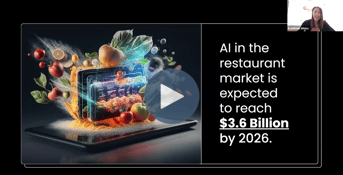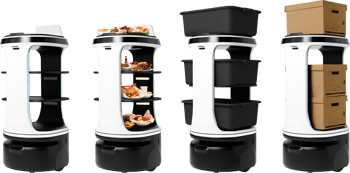In the fast-paced world of hospitality, the ability to manage restaurant inventory effectively can make or break your operation. From small mom-and-pop cafes to bustling multi-unit restaurant groups, inventory management software is transforming the way food businesses operate.
By harnessing these new digital tools, restaurateurs can optimize their stock levels, reduce waste, and streamline workflows — all while freeing up time to focus on delivering exceptional customer experiences.
At its core, restaurant inventory management software replaces the manual, often error-prone, methods of tracking stock. Instead of spreadsheets or handwritten logs, you can use smart software to gain real-time insights into your inventory.
But the top inventory management advantages go far beyond mere convenience. Let’s explore how this technology is revolutionizing the restaurant industry and why it’s become a must-have for any modern hospitality business.
1. It Reduces Food Waste
One of the biggest challenges for restaurant operators is minimizing food waste. Spoilage, over-ordering, and improper storage can lead to significant losses, eating away at already thin margins. Inventory management software solves this by providing accurate tracking of stock levels and expiration dates.
For example, with the right system in place, you can set alerts for items nearing their use — by date. This enables your kitchen team to prioritize these ingredients, reducing waste and saving money. You can also analyze purchasing trends to prevent overstocking.
By aligning inventory levels with actual demand, you ensure nothing goes to waste unnecessarily — helping your bottom line and the planet at the same time.
2. It Improves Ordering Accuracy
Gone are the days of guessing how much to order based on gut instinct or outdated records. Inventory management tools offer data-driven insights into your ordering patterns. By reviewing historical sales data and tracking ingredient usage, these systems help you make informed purchasing decisions.
This level of precision means you can avoid the common pitfalls of over-ordering or under-ordering. Over-ordering ties up cash in excess inventory, while under-ordering risks disappointing customers when items run out. With inventory technology, you can strike the perfect balance, keeping your shelves stocked with exactly what you need — no more, no less.
3. It Saves Time and Labor
Manually counting stock and updating inventory logs is not only tedious but also highly susceptible to human error. Inventory management software automates these processes, saving your staff countless hours.
For example, many modern systems integrate with your point-of-sale (POS) platform to automatically deduct items from your inventory as they’re sold. Others use barcode scanning or RFID tags to make inventory counts quick and painless.
This automation eliminates double-checking and rework, giving your team more time to focus on high-value tasks, such as prepping meals or engaging with guests.


Subscribe to Our Monthly Operations Newsletter
Learn how to streamline your processes, cut costs, and run a more efficient restaurant.
4. It Enhances Menu Planning and Cost Control
Successful menu planning starts with a clear understanding of your inventory. Restaurant inventory management software provides the insights you need to craft profitable menus while minimizing waste. By analyzing food costs and usage patterns, you can identify which dishes are your biggest moneymakers and which ones might be draining your resources.
The right system can even suggest ingredient substitutions or modifications to existing recipes to improve profitability. For example, if a key ingredient becomes unavailable or too costly, the software can help you identify alternatives that align with your budget and inventory. Over time, these adjustments can have a significant impact on your profit margins.
5. It Promotes Scalability and Growth
Whether you’re running a single-location diner or expanding into a regional chain, restaurant inventory management software makes scaling easier. These systems provide the structure and consistency needed to manage inventory across multiple locations.
For example, cloud-based platforms allow operators to monitor inventory levels in real time, no matter where they are. This is particularly valuable for multi–unit operations, where keeping tabs on stock across locations can be a logistical nightmare. With centralized reporting and analytics, you can identify trends, allocate resources more effectively, and ensure every location runs smoothly.
As your business grows, the ability to standardize and automate inventory processes becomes increasingly important. Investing in robust inventory management software early can set the stage for sustainable growth and long-term success.
Why Now Is the Time to Upgrade
The restaurant industry is evolving rapidly, and staying competitive means embracing the tools that give you an edge. The benefits of inventory management software aren’t just cutting costs; they help you create a more efficient, sustainable, and profitable operation.
By reducing waste, improving accuracy, saving time, and enabling better decision-making, these systems free up resources that you can reinvest in other areas of your business. In an industry where every dollar counts, restaurant inventory management software is no longer a luxury — it’s a necessity.
If you’ve been on the fence about adopting inventory management software, now is the time to make the leap. Not only will it help you navigate the challenges of today’s market, but it will also position your business for future success. So, explore your options, find a system that fits your needs, and start reaping the rewards of smarter inventory management.
Contact Back of House today to speak with me or another consultant about implementing an inventory management system tailored to your specific restaurant needs. We’re here to help you find the right solution to save money, reduce stress, and drive your operation forward.





